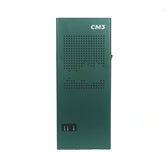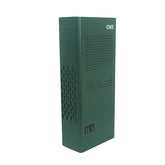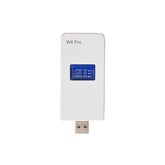Does the signal of the mobile phone need to be retransmitted via satellite?
Most mobile communication base stations use optical fiber to access the core network. The current mobile communication systems, including 2/3/4/5G, all base stations belong to the wireless access network. The entire mobile communication system consists of an access network, a bearer network, and a core network. 5G also has a part of edge computing.
The mobile phone is connected to the base station through the air interface, and the data of the mobile phone is uploaded to the base station, and then reaches the core network after being carried.
In the 2/3G era, mobile communication base stations mainly use E1 with 2M bandwidth for data backhaul. After the 4G era, most of these base stations that use 2M line backhaul have completed the IP transformation.
Currently, base stations and bearer networks use the most optical fiber networks, and base stations cannot do without optical fiber transmission networks.
In some areas, due to geographical conditions, base stations cannot be connected to the core network through optical fibers. The alternative is to use microwaves for backhaul. This situation is mainly in some base stations in high mountains or islands, and a small number of cities cannot use optical cables. The base station also uses microwaves for transmission.
The cost of satellite communication is high, and the bandwidth is relatively limited. Generally speaking, operators are not willing to use satellites for signal back transmission. The satellites we use most often to return base station data are emergency communication vehicles that we may occasionally see. .

In some emergencies, some regional network failures or sudden high traffic, or rescue and disaster relief, the operator will send emergency communication vehicles to ensure the area's mobile communication services.
The smart phones and feature phones that we often use now are all terminals in the mobile communication system. Our mobile communication system is more common and is reused by most users. It belongs to the land public mobile communication system.
In addition to the terrestrial public mobile communication system, there is also a special satellite communication system, the terminal it uses is called a satellite phone. Satellite phones require larger transmission power, so the antenna is larger than that of smart phones, and the power consumption is higher, and the functions are less than that of smart phones.
The cost of satellite phone, whether it is to make a call or to surf the Internet, is more expensive than the smart phone we currently use, and most people can't afford it. At present, most people using satellite phones are seafarers, non-industry prospecting people, living in deserts, grasslands, etc. In addition, some business people may also configure satellite phones in order to maintain continuous communication.
In most cases, the signal of the mobile phone does not need to be retransmitted by satellite. The above is shared by topsignaljammer. We are a shop that operates cell phone jammer, which are used to shield mobile phone signals, WiFi signals, GPS signals, and drone signals.













